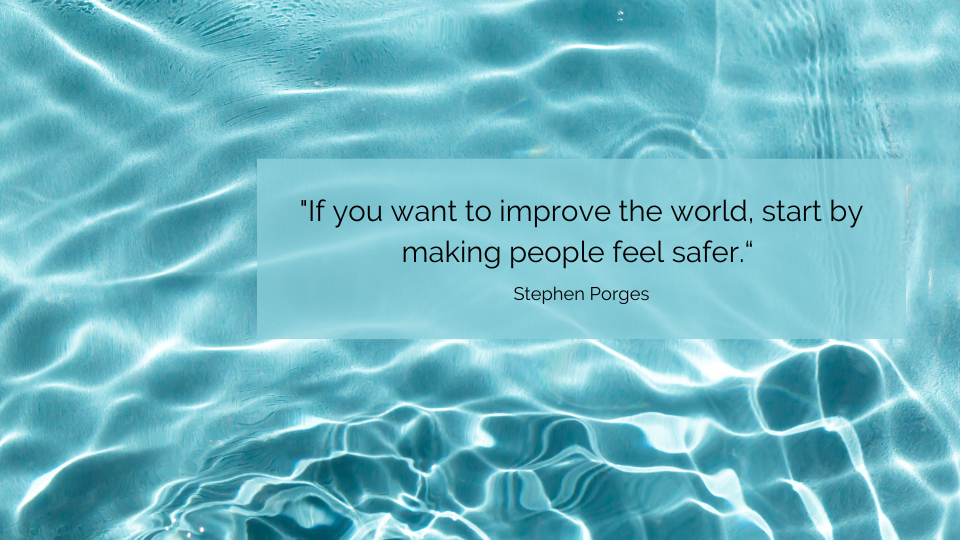
What is the Safe and Sound Protocol?
The Safe and Sound Protocol (SSP) is an evidence-based listening therapy developed by Dr. Stephen Porges, the psychiatrist and neuroscientist who formulated the Polyvagal Theory. It consists of a 5 hour playlist of specially filtered music. All that is needed is a pair of non-noise cancelling headphones that fully covers the ears and access to the app with the playlist. The 5 hours of listening can be spread over the course of days or weeks. It fully depends on the individual’s response to the filtered music.
SSP can help with
- symptoms of PTSD, anxiety, depression
- sound sensitivities
- auditory processing disorder
- sensory processing disorder
- misophonia
- auditory processing
- mood regulation/ self regulation
- hypervigilance
- distractibility
- problems with concentration
Porges originally designed the program to support children on the autistic spectrum disorder which showed effectiveness with emotional regulations. In those early stages it was administered in the form of 5 daily one hour long listening sessions.
As the protocol was tried and tested on other populations including adults with acute and complex trauma symptoms, it was found that less is ultimately more, i.e. listening can and should be titrated to shorter listening sessions over a longer period of time so that the changes in the nervous system can be fully integrated.
Polyvagal Theorie
The polyvagal theory can be described as the science of feeling safe. Polyvagal Theory focuses on what is happening in the body and the nervous system, and explains how our sense of safety, danger or life-threat can impact our behavior. Polyvagal Theory is a scientific framework that is applied in body-centered or “bottom-up” therapies (like Somatic Experiencing or SSP) to help relieve symptoms of stress and trauma and foster resilience.
It’s congruent with attachment theory and research on emotional self and co-regulation and neurobiological stress models.
Here is a perhaps helpful video about it: https://www.youtube.com/watch?v=GCRmkGSdN_0
Why music?
Porges discovered a connection between the middle ear muscles and nervous system state.
Nervous system states change and are adaptive. Different states promote different types of behaviour. There are nervous system states which are useful for defensive behaviours and nervous system states for social behaviours or resting behaviours. When we are in a fight or flight state (sympathetic) our physiology is different to when we are in a freeze state (dorsal). And when we feel safe and comfortable and interested in our environment and in people, we are in yet another state, a nervous system state where the so-called social engagement system (ventral) is online.
We want to have access to all states so we can feel and be safe in the mundane and the more or less adventurous moments of our daily life. We want to be able to react effectively to threat (with fight / flight / freeze) or to respond appropriately to signals of safety by fully engaging with our environment and the people in it.
When the muscles in the inner ear don’t contract properly, we can’t take in and interpret all sounds. Our ears and brain can’t discern cues of safety (higher frequencies) over cues of dangers (lower frequencies). Stephen Porges likens the contraction of the inner ear muscles to the skin of a drum. When the skin of the drum is loose, we hear lower sounds than when the skin is tightened. Inner ear muscles that fully contract can amplify higher frequency sounds and reduce the force of lower frequencies. The ability is critical for processing human speech which is on the spectrum of high frequency sounds.
How SSP can help
The music activates and stimulates the ventral side of the vagus nerve and is designed to shift the nervous system out of chronic defense states (sympathetic or dorsal vagal arousal) into states of social engagement. Hence, the SSP can create the conditions for our attachment system to work more effectively by increasing flexibility in the nervous system when it is stuck in trauma response patterns. When our ventral vagal complex is more “online” we can feel more connected to ourselves and the people around us, and enjoy an overall higher resilience.

A few thoughts at the end
I see SSP as an adjunct to trauma therapy, not a stand-alone intervention and definitely not a miracle treatment. It has helped my clients with sound sensitivities feel less bothered by certain sounds. It has helped clients feel increased capacity to deal with what would have been very challenging in the past. It has helped the process of therapy to move along in new ways. It has helped reduce chronic pain. It has helped clients feel more interested in making connections with others and more able to connect in ways that is not overwhelming.
If you are interested in the Safe and Sound Protocol and / or have more questions, send me an email or use the contact form.